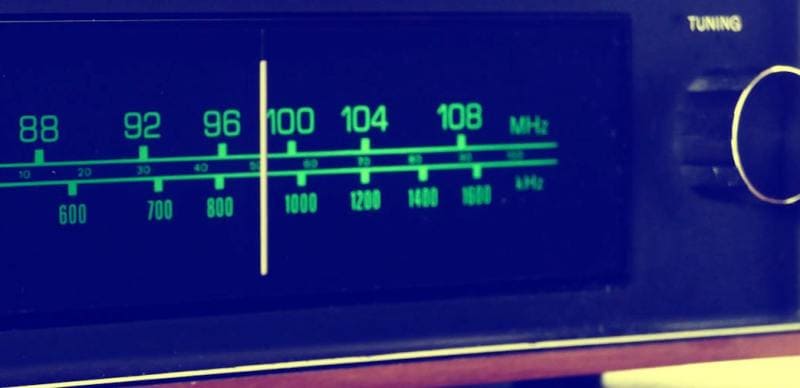Licence Free Walkie Talkie: Overview of License-Free Walkie Talkies in India
The introduction of licence free walkie talkies in the country has dramatically altered the mode of communication among the general populace and the business world. Because of the WPC allowing a number of certain frequency ranges to be busy without the need to make an application for a license consumers can now choose from an array of walkie talkies that meet their various demands. This write-up considers the properties, merits, and the business setting of the license free hand held radios in India, as well as some models which consumers can buy over the counters.
Historical Context
The WPC has extended the scope of 446 MHz to 446.2 MHz frequency range to cover personal mobile radio communications in the year of 2018. Because of this order, devices with maximum effective radiated power (ERP) of 0.5 watts were used without a license which greatly increased the availability of two-way radios for private and commercial purposes. This practice has resulted into the raising of several manufacturers producing low cost and compliant units thus making walkie-talkies a possible means of communication in different spheres like hospitality and tourism, event management, security, and environmental outdoors.

Image Credit: Wikimedia Commons, Adirach Toumlamoon
Benefits of License-Free Walkie Talkies
1. Cost-Effective Communication:
- Traditional licensing costs can be avoided by consumers because they utilize radio communication for private networks. For example, companies who employed hefty amounts for using legit services are now able to use non-licensed models which help them to operate at a very low rate.
2. Easy Accessibility:
- Besides, these devices are made usable easier as consumers do not need to go through challenging legal processes in order to purchase them. This clearly has increased the consumption of the products by families, businesses, and even people who like going on the outdoors.
3. Versatility:
- Walkie talkies that do not require licensing can be used in family outings or even used in big establishments professional venues providing quite a level of communication in a number of different environments.
4. Reliability in Remote Areas:
- Unlike mobile phones that rely on cellular networks, regardless of having low reception or not having reception at all, walkie talkies are effective aiding in replying in poorly supported areas best suited for outdoor escapades or even emergencies.
5. User-Friendly Operation:
- Also, these phones tend to be simple enough for most people so that even people who are ill versed in technology can use it without a hassle of intense training on the effective use of the device.

Image Credit: Pexels, Ivan Samkov
Key Features to Consider
There are some fundamental provisions that consumers ought to look for when choosing a license-free walkie talkie:
- Frequency Range: The device should only operate within the parameters set by law which is the 446 MHz band.
- Battery Life: Models having longer battery packs are recommended especially if the device is expected to be used outdoors for longer periods.
- Durability: Most walkie talkies are made for rough environments and therefore features such as waterproofing and rugged bodies are ideal.
- Range: Communication range can be effective depending on the setting urban or rural.
- Number of Channels: More number of channels can help in interference diminishment of other users and improving privacy.

Image Credit: Pexels, Ron Lach
List of licence free walkie talkie in India
Here is a detailed list of license-free walkie talkies available in India, along with explanations of their features and specifications:
1. Access P9 License Free Walkie-Talkie
- Price: ₹4,900 per piece
- Max Talking Range: More than 10 km
- Channels: 16
- Frequency Range: 400-470 MHz
- Type: Wireless with earpiece
- Noise Level: 60 dB
- Voltage: 220-240 V
The Access P9 is designed for long-range communication, making it suitable for various applications including security and outdoor activities. Its lightweight design and multiple channels help avoid interference, while the earpiece option allows for discreet communication in professional settings. This model is ideal for users who require reliable communication over extended distances without the hassle of licensing requirements.
2. Brutforce BFR-002 Walkie Talkie
- Price: ₹7,990 (pack of 2)
- Frequency Range: 446~446.2 MHz
- Channels: 16
- Battery Life: 2600 mAh Li-Ion
- Operating Temperature: -25°C to 55°C
The Brutforce BFR-002 is a robust two-way radio designed for portability and use in remote locations. It features a micro-USB port for charging with mobile chargers or power banks, making it convenient for outdoor use. The ergonomic design ensures a firm grip, and it includes advanced functionalities like priority scan and CTCSS/DCS function, enhancing its usability in various scenarios such as event management and hospitality.
3. Convey C1 Pro License Free Walkie Talkie
- Price: ₹4,800 (discounted from ₹8,200)
- Type: PMR band, government approved
The Convey C1 Pro is still another excellent walkie talkie that does not need a license to communicate. The walkie talkie is designed to function inside the PMR446 band, which is within the rules and regulations of the Indian government. This particular model is intended for individual and business communication purposes. This system provides superb sound and performance quality. Due to its small size, it is very convenient to use while on the move and engages in outdoor activities.

Image Credit: Pexels, ISKCON TV Dhaka
4. Rio Plus License Free Walkie Talkie
- Price: ₹7,499 (discounted from ₹8,500)
- Battery life: 4200 mAh
Rio Plus walkie talkie is designed and manufactured with high capacity battery which helps in usage for longer period with little hassle of recharging. The designed is for multiple uses such as in security and construction sites where effective communication is a must.
5. Evox X1 Pro Industrial Walkie Talkie
- Price: ₹6,449
- Type: Industrial use
The Evox X1 Pro is tailored for industrial applications, featuring enhanced durability and performance under demanding conditions. It supports multiple channels and offers clear communication over significant distances, making it ideal for factory settings or large construction sites.
6. Motorola T82 License Free Walkie Talkie
- Price: ₹13,999 (discounted from ₹18,000)
- Range: Up to 3 km in open areas
Over the years, the Motorola T82 has been well appreciated for its ease of use and its efficiency. It has an emergency alert and can be used outdoors because it’s rated IPX2. The T82 is for those who want to be associated with a brand that is reliable and has been around for multiple years.

Image Credit: Pexels, cottonbro studio
7. Tokimo Rio Advance Waterproof Walkie Talkie
- Price: ₹7,999 (discounted from ₹9,500)
This model has its own unique waterproof features so it can be used in wet areas or while doing outdoor activities such as boating or hiking which makes it attractive. The Tokimo Rio Advance is built to last while ensuring that its values combine to get the work done, which is communication.
8. Kenwood TK-3501 License Free Walkie Talkie
- Price: Approximately ₹9,300 per piece
Kenwood TK-3501 has proven to be a rugged portable transceiver and customer speaks volume as it operates at the PMR446 frequency band. Because of its robust nature and sound quality, it has been used by professional people in the field of security services, event management and many others because they are easy to work with.
Regulatory Compliance
While users do not need individual licenses to operate these devices, manufacturers must ensure their products comply with WPC regulations. This includes obtaining type licenses which validate their designs for public use. Consumers should verify that any walkie talkie they purchase is indeed compliant to avoid legal repercussions.
Market Dynamics
The walkie talkies market in India, more specifically the market for walkie talkies that do not need a license, has picked pace owing to many reasons:
- Increased Demand: A surge in out of home activities like trekking, camping, and events has resulted in demand.
- Competitive Pricing: Due to a market influx of manufacturers, the prices have plummeted, making these devices available to the greater population.
- Technological Advancements: Break throughs in battery tech and miniaturization have resulted in better and smaller devices.
Licence free walkie talkie frequencies / frequency bands
A thorough analysis of India’s licensing regime for selffone serves me well here. In Indian context, use of a steelfone that does not require a license is controlled by the WPC, which also earmarked certain frequency bands for the public to use without a license. Here is a breakdown of the frequency bands for Indian licenseless steel phones:

Image Credit: Pexels, Anthony
1. PMR446 Frequency Band
- Frequency Range: 446.0 MHz to 446.2 MHz
- Effective Radiated Power (ERP) of 0.5 watts
- Max Range: Estimated to be around 1.5 km in the open, marginally reducing to around 0.5 km in congested urban settings due to obstructive properties.
The PMR446 communications band is set aside for Personal Mobile Radio (PMR) communications, which allows users to freely use walkie talkies. This frequency range is good for two way communication and it is in popular use in many fields including security, hospitality and outdoor activities. All devices using this band must be compliant with WPC rules and they are normally fitted with several channels (up to about 16) so that there may not be overlap with other users.
2. Citizens Band (CB) Radio Frequencies
- Frequency Range: 26.957 MHz – 27.283 MHz
- Effective Radiated Power (ERP): Up to 5 W
CB radios are not as popular as the PMR446 band but in India they are also licenseless use. Communication with these devices is radio-amateur or CB type and uses CB channels which are allocated to US and Europe. If compared with modern handheld radios “walkie talkies” these indeed look old fashioned, however they do remain as legal alternative means of communication without a license.
3. Other License-Free Bands
- Frequency Range: 865 MHz to 868 MHz
- Effective Radiated Power (ERP): Up to 1 watt
This band is primarily used for low-power devices and applications such as telemetry and remote control systems. Although it is not assigned specifically to de walkie talkies, it is still best use for the latter.
Compliance and Usage Guidelines
To ensure compliance with Indian regulations:
- Walkie talkies must operate strictly within the specified frequency ranges.
- Users should verify that their devices have been type-approved by the WPC.
- Devices should not exceed the maximum ERP limits to avoid legal issues or interference with licensed communications.
Importance of Compliance
The utilization of non-compliant devices can result in violations of the law resulting in penalties and confisication of equipment. They, therefore, recommend the purchasing of walkie talkies from reputable manufacturers who guarantee WPC compliance.
The allocation of license-free frequency bands in India has made two-way communication more accessible for individuals and businesses alike. The PMR446 band stands out as the primary choice for walkie talkies, while CB radio frequencies offer an alternative, albeit less popular option. Adhering to regulatory guidelines ensures that users can enjoy uninterrupted communication without the complexities associated with licensing requirements.
Must Read,
✔️ Best Earphones Under 500: Budget-Friendly
✔️ How to Scrap Old Bike Legally in India: Step-by-Step process
Conclusion
License-free walkie talkies represent a significant advancement in communication technology within India. They provide an affordable, versatile solution for individuals and businesses alike who require reliable communication without the complexities associated with licensed radio systems. As technology continues to evolve and regulations adapt, these devices are likely to become even more integral to personal and professional communication strategies across various sectors.
To conclude, whether it is for use around a construction area or for outdoor enjoyment, there is a large stock of license-free walkie talkies in India that can exceed your expectations.
Frequently Asked Questions (FAQs)
What are the legal consequences of using non-compliant walkie talkies in India?
Using illegal walkie talkies in India brings on a range of consequences as per the law. If one uses or possesses whatever wireless transmitter without a license is prohibited by provisions of Indian Wireless Telegraphy Act of 1933. Sentence can be between 3 years of jail, monetary fines and even the two depending on the offense. Moreover, all the equipment used in this regard can be seized by the relevant authorities, and if the offense is repeated, further penalties will resort, thus emphasizing the need for all users, as well as companies, to comply with the rules.
How can I ensure that my walkie talkie is compliant with WPC regulations?
In order to not get into trouble and also avoid any off lawfully issues, it is best to check for regulatory approval from the WPC or DoT as that is a good way to ensure that the device is legitimate. You must also make sure that it works in the range allowed to you including PMR446 devices which are 446.0 to 446.2 MHz, and it also doesn’t breach the most power output which is generally 0.5 watts. Another way to ensure you avoid getting into trouble is to buy from manufacturers that are known to provide documents that can prove the legitimacy of that specific device.
What are the common issues faced with cheap license-free walkie talkies?
Obstacles associated with low cost license free walkie talkies for instance include weak construction, small coverage, and easy disturbance. A good number of the cheap models are less likely to comply with power output levels and frequency usage restrictions resulting in inability to communicate in few instances. Consumers could also have problems with the life span of the batteries used in such models or the traits of the model itself in the adverse conditions. For example, Some cheap models of walkie talkies may not have good clarity on the voice output due to lack of adequate channels, which at times affects communication in business operations or communications during outdoor activities.
Are there any specific brands known for producing WPC-approved walkie talkies?
There are a number of brands in India that manufacture walkie talkies and these are WPC approved. Among the local manufacturers, Motorola, Kenwood, and Brutforce offer a range of their models that are compliant with local rules and regulations. These are brands which have stood through the test of time and can perform efficiently in different settings hence, they attract customers who want compliant communication devices. Also, people like Access and Convey, provide license free radios which are in compliance with WPC standard.
Are there any recent updates to the WPC regulations for walkie talkies?
According to the recent revisions, walkie-talkies operated on de-licensed frequency bands require Equipment Type Approval (ETA) from relevant authorities. In addition, the WPC is in charge of the radio frequency interface and devices use specific features to ensure that they do not interfere with one another during competition. Effective January 2024, companies must take these measures in order to guard consumers and minimize chances of interference with other wireless systems.
What steps should I take if my walkie talkie is seized for non-compliance?
Once again, contact the relevant authorities in order to find out why your walkie talkie has been taken away and any legal consequences relating to this event. You may have to present documents that show you were compliant or that your device is fitted with a WPC ETA certificate. Engaging specialist lawyers in telecommunications regulations might be a good option for these people in order to overcome the situation to the extent of getting their gadgets back whilst complying with all relevant laws.
How can I check if a walkie talkie brand is reputable and compliant?
The first step in checking a walkie talkie brand’s reputation and compliance is to research the brand’s history, reviews of their products from customers, and their reputation in the industry. Note WPC ETA approval among other commendations, as this informs that the appropriate standards are met and regulatory mandates are fulfilled. Also make sure to check official websites or reputable retailers that compile lists of compliant products to ascertain that the brand has quality and reliability history in wireless communication devices.









